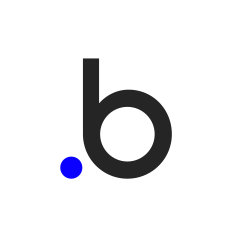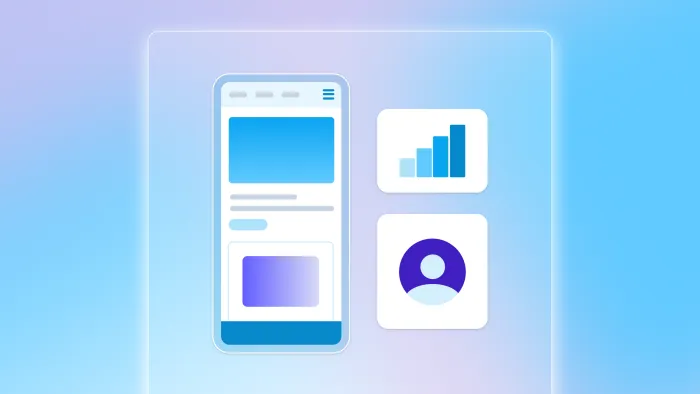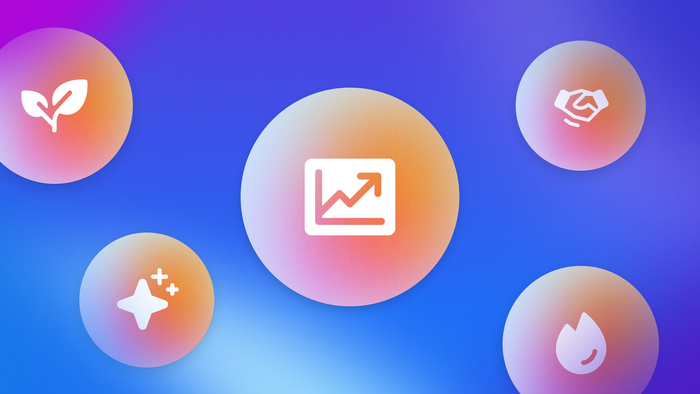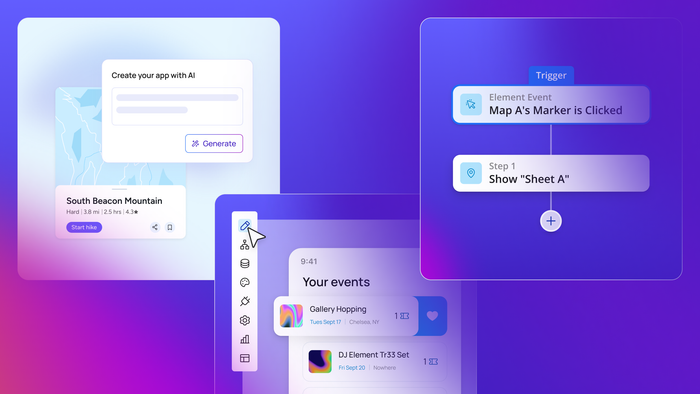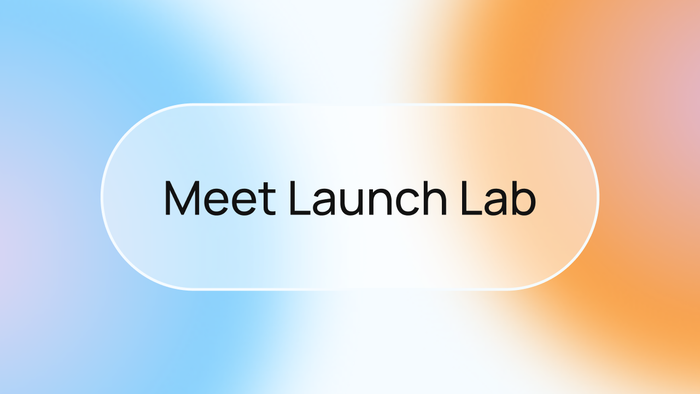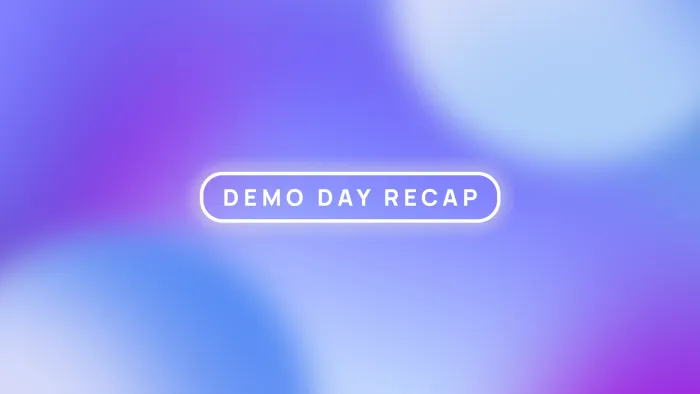You’ve got your app. You built it, demo’d it, launched it, and are so excited to see it get into the hands of real users.
And then… crickets.

If you relate to this guy on Reddit, then this article is for you. We talked to several Bubble builders and team members about building mobile apps and mobile app user acquisition — and here’s what they recommended to grow your app’s user base.
How to increase app users
You can have the best app in the market, but if no one knows about it or uses it, your app will fail. It’s a hard truth, but an essential one to consider early on. That way, you can have a real strategy to optimize user acquisition and give your app a solid foundation.
App store optimization
First things first: App store optimization (ASO) is a must for every mobile user acquisition strategy. An optimized app store listing helps increase your visibility, ranking, and downloads, and is foundational for any other user growth strategy.
Here’s how to do it:
- Optimize your app store listing with a clear description of your app and relevant keywords. In other words: Figure out what potential users for your app are searching for in the app store — or on Google or LLMs like ChatGPT — to find apps like yours. For example, if you’re building an AI-powered to-do list app, users might be searching for “to-do list app” “to do list with AI” “AI scheduler” or similar keywords. Include these in the listing and the app store description of your app to make it easier to find.
- Use compelling screenshots. A picture’s worth a thousand words — or a thousand optimized keywords. Clear, accurate, and compelling screenshots of your app set expectations and also help entice potential new users to download.
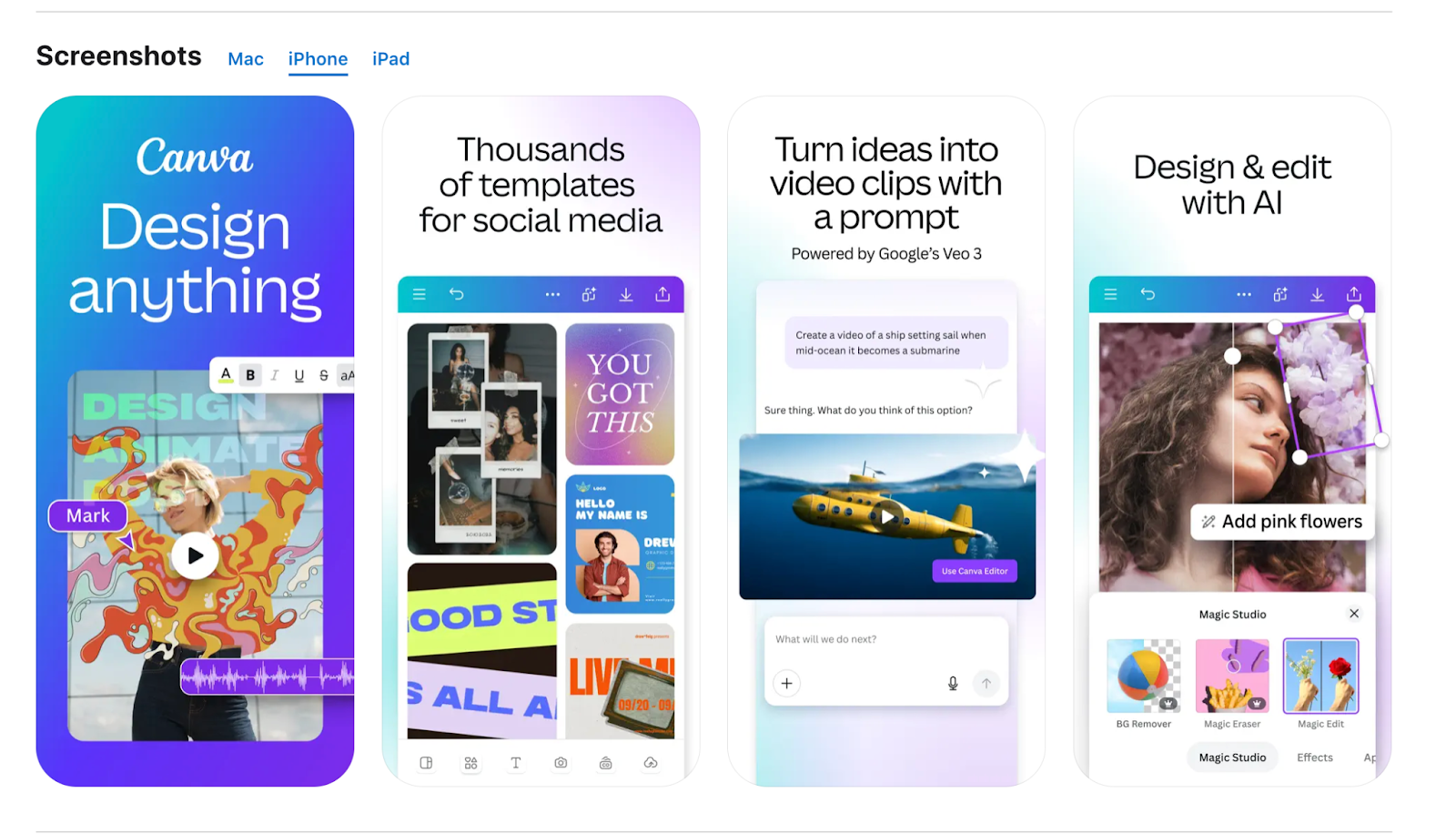
- Consider running app store search ads. Ads in the Apple App Store or Google Play store help users find your app — and find it first, especially if there are a lot of apps that do something similar to yours. Ads can also help you get your mobile app in front of your target users, even if they’re not directly searching for an app like yours.
Build in public
“Building in public” can help you grow an interested audience before your mobile app is even ready to launch — and it’s a strategy many Bubble builders have used successfully.
When you build in public, you’ll share consistent, honest updates around your work, challenges, solutions, and learnings in real-time with an audience (or multiple audiences), typically online. This might include sharing how you came up with your mobile app idea, what you’re working on that week, how you’re building your app, early previews of what you’re building, questions about challenges you’re facing, and so on.
Yuri Marinho, founder of Scanimal, said:
“The most effective way I’ve gotten new app users was simply by building Scanimal in public from day one. This approach attracted a tech-savvy community that was eager to follow the project’s progress… In the long run, combining the “build in public” strategy with proactive community engagement and a waitlist proved to be the perfect combination for driving user growth.”
Building in public is a popular and well-known idea around the tech world, so it’s an especially good strategy if you’re building an app catered to a tech-savvy, entrepreneurial, or product-focused audience.
However, it can also be a good way to build interest and demand for consumer products as well! The key is being willing to consistently show up where your audience is, with updates and insights into your process that will engage your audience and expand awareness about your app.
Incentivize referrals
Word-of-mouth is one of the oldest and most effective growth strategies. For example: Did you know that 88% of consumers trust word-of-mouth recommendations more than any other marketing channel? Or that large-scale research has found that referred customers both make more purchases (32% more than non-referred customers) and refer more other customers?
And what could be easier than your customers marketing your app for you?
Except that generating word-of-mouth growth is often not that easy. One key way to do it: incentivizing referrals.
Incentivizing referrals can look like:
- Giving a future discount to referrers and referrals via a unique referral code.
- Offering rewards or app benefits to users who refer a certain number of new users.
- Offering a tiered reward program where users can earn better rewards the more users they refer.
- Having a contest or sweepstakes that requires referrals to enter.
Dropbox was an early and very successful example of this: In the early stages, they offered additional free storage to users who referred people to sign up and to users who signed up via referral. As users got more storage, they used Dropbox more and needed more storage, which incentivized them to both refer more users and keep using the product.
So, product-related benefits — when they’re truly beneficial to the user — can create a successful flywheel effect for both you and your users. But there are as many good ways to incentivize referrals as there are apps. As Tomás Calle, CEO of Lineups says,
“The key to incentivizing referrals is finding the right users who are willing to recommend your app, and then implementing easy ways within the app for the user to invite friends and get rewards.”
Content marketing and social media
Content marketing and social media can be effective ways to grow your audience organically — even before your app is fully launched.
Similar to “building in public,” relevant content can help you build a brand, not just an app. That way, you have an audience ready and waiting when your app launches.
Yuri Marinho, founder of Scanimal, says,
“My advice for anyone launching a B2C SaaS app is to focus on distribution early, even before your solution is fully ready…I highly recommend leveraging the “watering holes” concept: go where your potential users already are, whether that’s online communities (like Reddit, in my case) or physical spaces. Engaging with these communities from the start helps you validate your idea and build an interested user base sooner.”
There are so many ways to build a following online with content, including:
- Content marketing: Build SEO momentum and establish authority and credibility with blog posts, videos, and longer guides that showcase your app’s use cases or how it solves the user problems. This is a great solution for more complicated apps that involve questions a user is likely to seek out advice on, such as SaaS tools, business or enterprise apps, or niche products.
- Social media marketing: Build a following on social media to connect with your audience directly. You can share what you’re building and become an authority on topics your audience is interested in. Better yet, you can also ask questions and get user feedback directly, get feature ideas, learn their world, and find testers for your app.
- Email marketing: With the rise of platforms like Substack and Beehiv, email is a fast-growing marketing channel. As older demographics may be shying away from social media platforms, reaching people directly in their inboxes is a great way to engage users and share updates.
- Influencer marketing: Working with influencers to promote and share your app on their channels is an effective way to combine the power of referrals with the benefit of scale. Influencer marketing can mean working with big social media or YouTube influencers, or you can work with “micro-influencers” who are power users of your app. More genuine referrals to a smaller audience can sometimes be a lot more effective than a campaign from a major influencer whose audience isn’t as engaged.
Paid ads
Organic user acquisition is obviously ideal in many ways — it’s often less costly and can be more sustainable long-term.
However, paid user acquisition is a good tactic — especially early on — to gain momentum quickly, grow your user base, and (somewhat ironically) support organic growth. As more users find and use your app, organic growth like referrals and word-of-mouth grows. Paid ads and paid media marketing can support that flywheel.
Besides, there are so many options for paid marketing that it’s an effective strategy for almost any app. For example, you might consider:
- Social media ads: Ads on platforms like Facebook, Instagram, TikTok, or LinkedIn, depending on your audience, can be an effective way to grow awareness and downloads of your target audience.
- Video ads: Short video ads for sites like YouTube can be very effective. In general, impression rates are around 30% and click-through rates range from 1% to as high as 12% depending on the campaign. In other words: If 1,000 people see your ad, anywhere from 10 to 120 of them might download your app.
- Google ads: Paid ads in search allow you to surface your app at the top of search results for relevant keywords. Like other paid ads, the conversion rate and CPC rate varies. But for targeted, relevant keywords, the cost can definitely pay off.
- Mobile ad networks: Third-party networks can also help connect you with other distributors or platforms where you can run ads, for example, running display ads on relevant websites or banner ads on other apps.
As with any strategy, you don’t want to fully rely only on paid ads. But if your app relies at all on user growth and momentum to be effective — for example, social media apps or marketplaces — paid ads can be an effective technique to help power that quick growth.
User acquisition challenges
Even if you “do everything right,” user acquisition is rarely easy. Here are five of the most common challenges in user acquisition — and how to tackle them.
User acquisition cost
User acquisition costs (or customer acquisition costs, CAC) is a fancy way of understanding how much it costs, on average, to acquire new customers. For example, if you’ve spent $500 on marketing this month and gained 70 new users, it’s costing you roughly $7 to acquire each new customer.
What a “good” CAC is depends on the lifetime value of your customers — are you a free or low-cost consumer app? Are customers eventually purchasing more profitable subscriptions?
User acquisition costs can grow quickly, especially if you’re heavily reliant on paid media and ads to grow your user base. Balancing your paid marketing with organic marketing can help continue to grow your audience without ballooning costs.
Many of the organic techniques we discussed above can help lower your CAC. For example, content marketing and SEO costs money to produce, but then can keep bringing in new users for years. Influencer marketing, UGC, and social media marketing can also be very low-cost ways of acquiring new customers.
Marketplace problem
Some app concepts aren’t useful until you reach critical mass with your user base. For example:
- Social media apps (more useful the more of their friends join)
- Marketplace apps (need both buyers and sellers)
- Event or gathering apps (most useful when there are many people checking for events or planning with of the app)
In short, any app that has a social engagement element works best when there are more users on the app.
For this problem, the key is reaching critical mass as quickly as possible — and the easiest way to do so is to incentivize users to bring on new users with them. Incentivizing referrals is a good strategy for this, so is influencer marketing. It’s also helpful to look at how successful apps with this problem solved for this:
- Build intrigue: Pinterest started with an “invite-only” beta that required any new users to have an invite from an existing user. This strategy builds intrigue and a sense of exclusivity, while also encouraging current users to use their status to send out invites.
- Encourage users to take the right actions: Facebook found that users who had at least seven friends within 10 days were most likely to stay engaged with the app. As a result, they adjusted their onboarding and early notifications to all revolve around getting a user to that “seven friends” benchmark as quickly as possible.
- Focus on one audience first: Etsy, in the early days, focused mostly on sellers. By creating a marketplace that was exclusively focused on handmade, niche products, they were able to attract sellers to their platform instead of other, more general and hard-to-compete-in platforms, and the sellers in turn, helped drive demand and bring in buyers to the platform.
Market saturation
No matter how specific or unique your app is, you’re probably not the first or only app to address users’ problems. And even if you are, you’ll still find a switching cost from doing nothing, or using some other hodge-podge solution instead of your app.
So how do you convince users that your app is the one for the job?
Yuri Marinho says,
“[You need to] show your users that you genuinely care about solving their problem, and position yourself as the right person to do it… When potential users see [you building] an active, engaged community and a founder that listens, it builds credibility and trust, making it easier to overcome user acquisition challenges.”
Founder-market fit matters just as much as product-market fit. Showing users that you know their pain, care about solving their problem, and are curious about their experiences and needs helps you build a platform as the one who is building exactly what they need and want.
Audience fragmentation
Audience fragmentation is a more “invisible” user acquisition challenge. That is: Not everyone in your potential audience is using the same device or platform. Users are split between Android, iOS, and web, and use different device sizes with different capabilities between them.
So how do you build something everyone can use?
First, clarify your target audience. More niche audiences may very well lean toward one device type or OS. For example, if you’re building an enterprise data analysis app, you’ll likely lean toward a web app, at least at first.
But for a consumer app, iOS is usually the most obvious starting place.
Better yet: Build on a platform that allows you the flexibility to create whatever your audience needs, easily. For example, when you build on Bubble, you can use a shared backend for web, native Android, and native iOS apps, all in one place. Plus, a single platform to build apps for all three places gives you speed without losing control or alignment between your apps. With native integrations, responsive design, the power of AI, and no-code building tools, you’ll have everything you need in one place to build for your entire audience.
Churn
Finally, acquisition is a leaking bucket if you haven’t solved the problem of churn. Churn measures how many of your customers are lost each month. That is: If customers are signing up for your app, but then never return to use it regularly, all of your hard work at acquiring those customers is going to waste in the long run.
An added bonus: More engaged existing users are more likely to refer other new users to your app.
Addressing churn and increasing user engagement for retention comes down to meeting your users’ needs while also increasing positive experiences with your app (and decreasing negative ones). There are plenty of strategies to improve app user retention, but the key ones to start with are:
- Reduce friction. Align your UI and UX with current standards, and make sure your app is easy to use. Usability testing and A/B testing can help make sure your app is easy to navigate and use.
- Offer mobile-exclusive deals and perks. If you also have a website or web presence (or physical presence!), mobile-exclusive deals can be a quick ticket to both new app users and retaining users. Things like exclusive discounts, free shipping, added deals, bonus offers, new or early product access, and so on can all be ways to incentivize using an app.
- Send personalized push notifications. Generic push notifications are likely to be ignored. Personalized notifications related to purchases, app usage, or known preferences? Those will actually move the needle in encouraging users to stay engaged with your app. Use tools like OneSignal or Klaviyo to segment audience types and send push notifications.
- Gamify your app. Games aren’t just for gaming apps! Apps of all kinds — yes, even business and enterprise apps — can benefit from gamification. From “streaks” to spontaneous rewards or badges and rewards, gamifying your app can encourage users to keep coming back and use it more.
Scale and grow your app on Bubble
Scaling and growing your app can be even trickier than building it in the first place. But using the right tech to build your app can make every stage of the process easier.
At Bubble, we’re here to help you build a business, not just an app. Here’s what that looks like:
- AI-powered generation tools paired with a no-code builder that gives you full control — no more getting stuck in prompt loops
- Enterprise-grade security and privacy that helps you create a secure app, for any audience
- Full-stack, all-in-one platform to build your entire app for web and native mobile in one place
- Proven, scalable platform that is home to millions of apps, and apps that reach millions of users
- Native mobile capabilities paired with the power of no-code and AI integrations for modern apps — without coding
Build for as long as you want on the Free plan. Only upgrade when you're ready to launch.
Join Bubble